What type of drill bit do I need for porcelain tile?
When we install porcelain tiles for flooring and wall coverings we will often need to drill holes. These can be for junction boxes, sockets, lights, drains or pipes. There can be many questions about how to tile porcelain and the correct tile drill bits to use.
Do I use the same drill bits that are used to drill walls? Can I break the tile if I don’t use the right drill bit? Should I use a drill or another tool?
It is completely normal that these and other questions arise. In this article, we answer these questions about how to achieve a perfect finish when using a drill bit for porcelain tile.

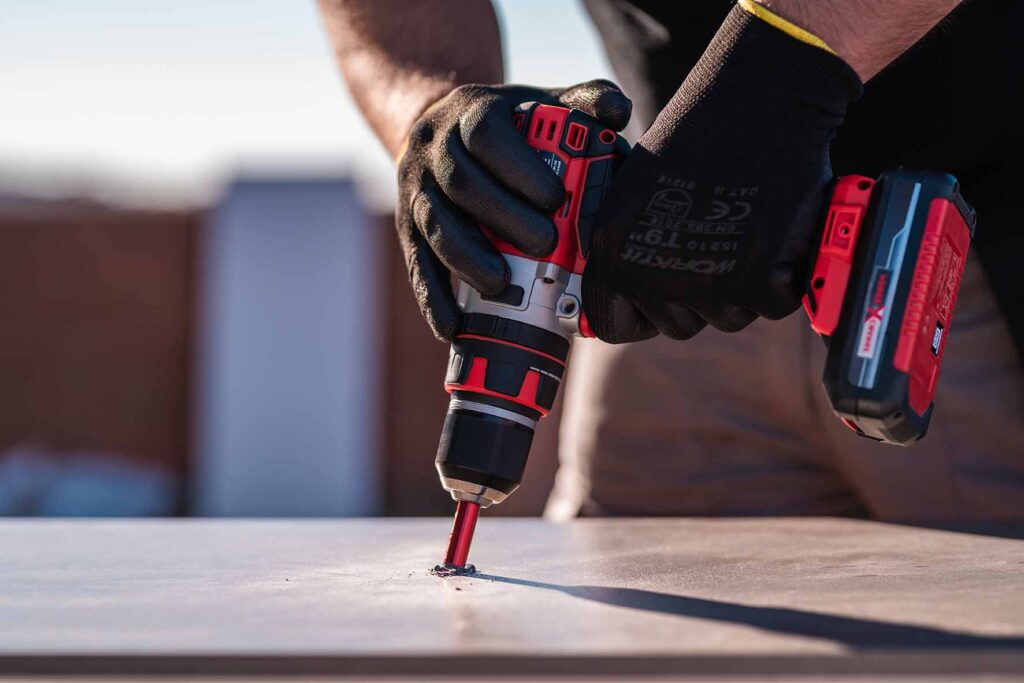
TYPES OF DRILL BITS FOR PORCELAIN TILE
Let’s take a look at the different RUBI solutions together with the diameters available and the recommended rpm for each range:
RUBI DRYGRES PREMIUM DRILLS
Within the range of drills for porcelain tile, the DRYGRES PREMIUM are the new range of drills for dry drilling with grinder. Its extra long life, up to 3 times longer than the rest of the drills on the market, makes it the best professional solution for a more stable cut with a long life.
Thanks to its highly concentrated diamond head, the DRYGRES PREMIUM range is able to maintain a constant speed and precision during each use, thus ensuring a stable number of holes throughout its life cycle.
RUBI FORAGRES DRILLS
These are drills with a sintered diamond band, joined to the body by laser welding. Designed for wet drilling stoneware, porcelain stoneware, granite, marble and tiles. They offer great durability and quality finishes.
RUBI EASYGRES DRILLS
With electroplated diamond band and steel body, they are for wet drilling tiles, stoneware, porcelain stoneware, granite, marble and glass. They generate very little vibration.
RUBI DRYGRES DRILLS
These are vacuum brazed diamond drills. For dry drilling tiles, stoneware, porcelain stoneware, granite and marble. They are air-cooled when rotating, so it is recommended to make a small orbital movement when drilling to improve ventilation.
The 4 smaller diameters incorporate a wax plug to improve lubrication and cooling. Be sure to tap out any material that remains inside the drill bit before drilling again.
This allows good ventilation and extends the life of the drill. Their maximum working speed is 14000 rpm, so they can be used with a grinder and alternatively with an electric drill. They offer high temperature resistance and durability.
RUBI DRYGRES 4DRILL BITS
The same type of drill and for the same materials as the DRYGRES drills, but with a minimum working speed of 1000 rpm, which makes them perfect for cordless drills.
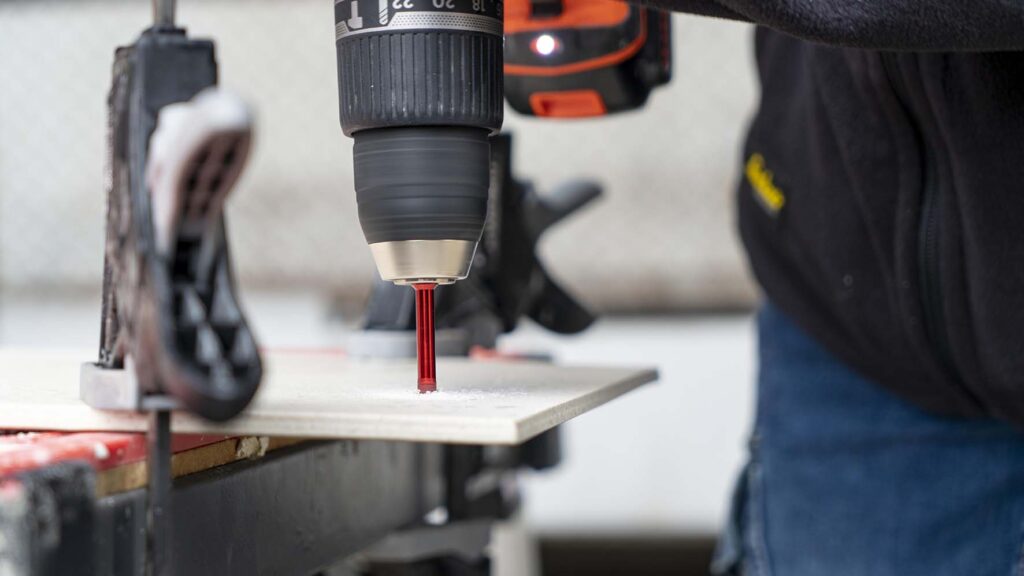
FREQUENTLY ASKED QUESTIONS ABOUT DRILL BITS FOR PORCELAIN TILE
ARE THE SAME DRILL BITS USED FOR DRILLING HOLES IN WALLS?
Regarding the first question we are often asked, the answer is NO, the same drill bits are not used for drilling porcelain tiles as for drilling a wall.
Walls are usually made of brick and cement with a plaster coating, unless they are made of plasterboard. To drill them, we use tungsten carbide tipped drill bits, also known as widia, the same material that has always been used to make tile drill bits.
But in this case we are talking about porcelain material, which, although it is a ceramic material just like tile, has different properties and is much harder. To drill porcelain tiles properly, we must use diamond drill bits, which are specifically designed for drilling high-hardness ceramic materials.
CAN THE TILE BREAK IF I DON’T USE THE RIGHT DRILL BIT?
Not using the right type of drill bit for these materials can lead to serious problems, from breaking the tool, with the risk to our safety that this entails, to damaging or breaking the tile we want to drill.
SHOULD I USE A DRILL OR ANOTHER TOOL?
As for the tool to use, it will depend on the type of drill bit we choose. Some work better at higher revolutions, and for these we will usually use a grinder. Others are designed to work at lower rpm, and with them we will use a drill, always making sure that we deactivate the hammer mode because we could damage the porcelain with the hammering.
We must also bear in mind that the diameter of the drill bit is directly related to the speed of rotation. The larger the diameter, the lower the rpm and vice versa. This is also related to the type of cooling we will use.

It should not be forgotten that diamond drills are a super-abrasive, i.e. they drill by friction. This friction between the diamond strip and the material generates a high temperature increase. This gives rise to two types of cutting or drilling and therefore to two types of diamond drill bits depending on the type of cooling:
WET CUTTING DRILL BIT
Wet drill bit ranges usually run at lower rpm and therefore drill bits are used.
DRY CUTTING BITS
Dry drilling ranges of drills tend to run at higher rpm and that is why we use grinders. Although there are exceptions, such as the DRYGRES 4DRILL drills which are for dry drilling but are designed to run from only 1000 rpm with conventional or even cordless drilling. Dry drilling is faster, but generates more dust, and wet drilling is slower, but we get a better finish.
At RUBI we have different ranges of bits for porcelain tile, both for wet and dry drilling, for drill or grinder. In this way, we offer solutions for all kinds of needs, including practical kits with different drill bit diameters, water tank with hose for cooling and guides to prevent the drill bit from slipping unintentionally.
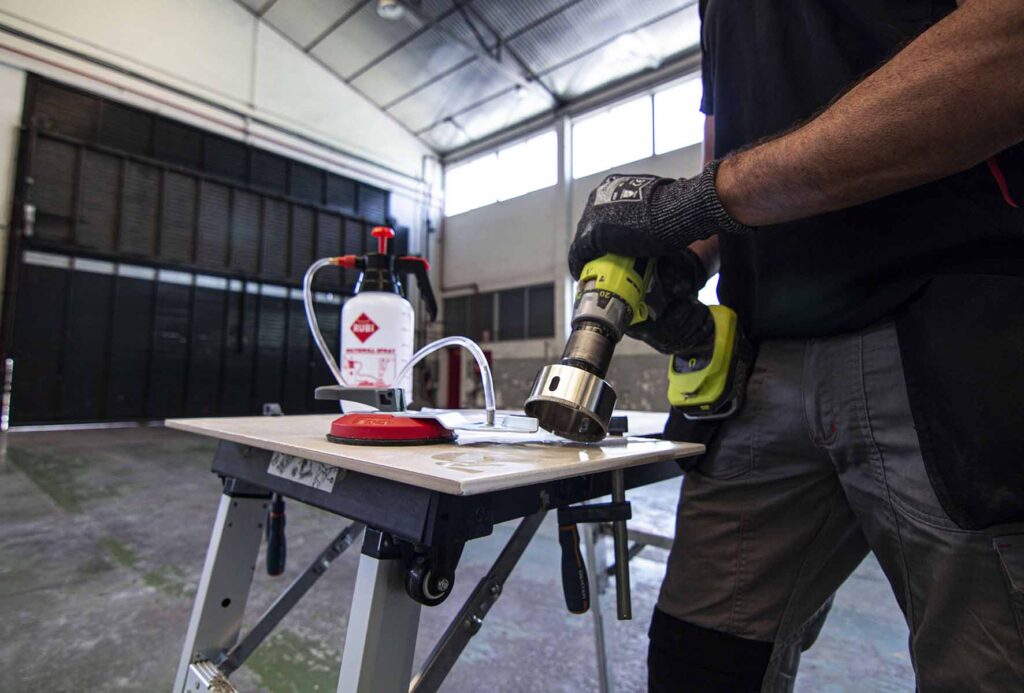
SUCCESSFUL DRILLING FOR A PERFECT FINISH
Now you know the best options for porcelain tile drill bits that will allow you to achieve a perfect finish.
To summarise, let’s take a brief reminder of the process for successful drilling.
1. PREPARE THE TANK
In case of using wet-cutting bits, prepare the water tank, together with the centring guide, to cool the tool during drilling.
2. CHOOSE THE DRILL BIT
Choose the right drill bit and mount it correctly in the drill / grinder.
3. MARK
Mark where you are going to drill and start drilling on the visible side at low speed. Increase the rpm progressively.
4. EMPTY
Empty the material left inside the body of the drill bit before drilling the next hole.
Following these steps and the advice we have given you, we can assure you that you will achieve a perfect finish when drilling porcelain tiles with diamond drills.
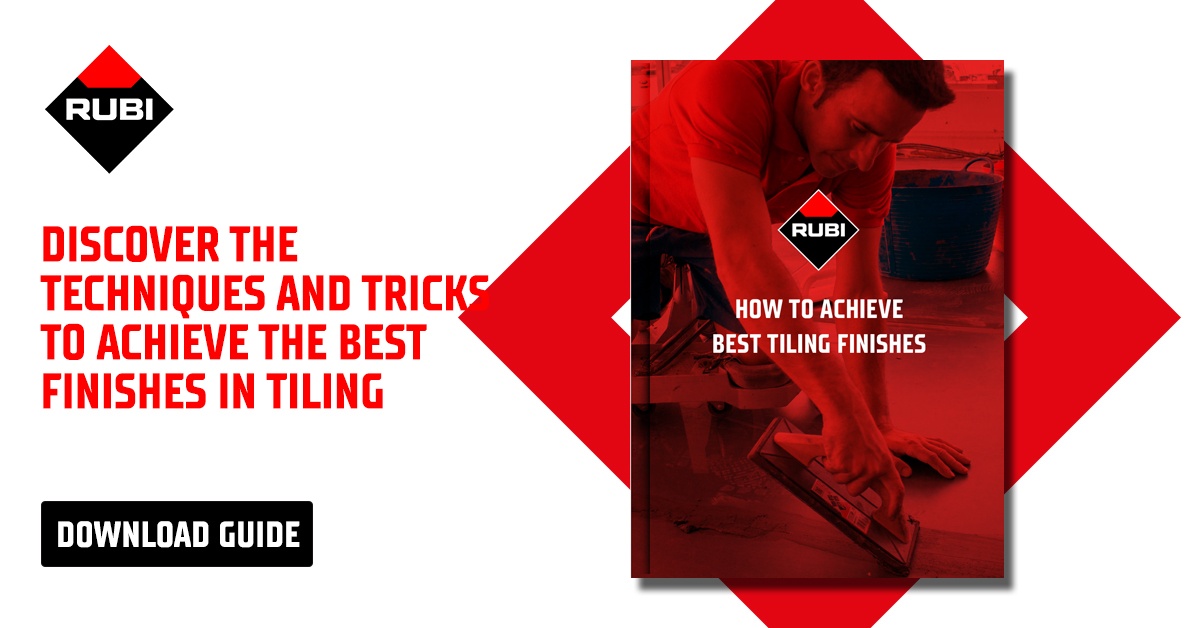

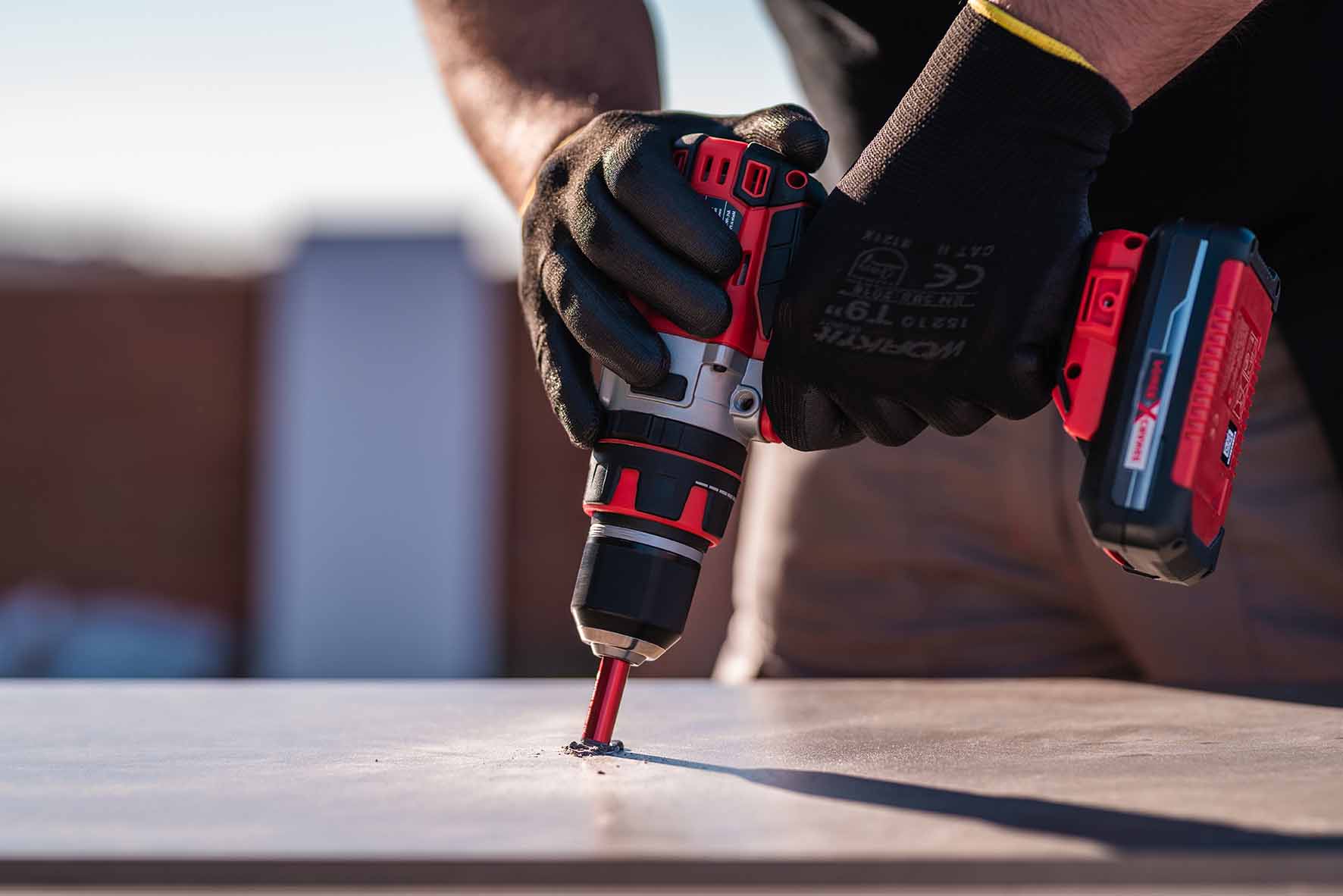
Post a comment